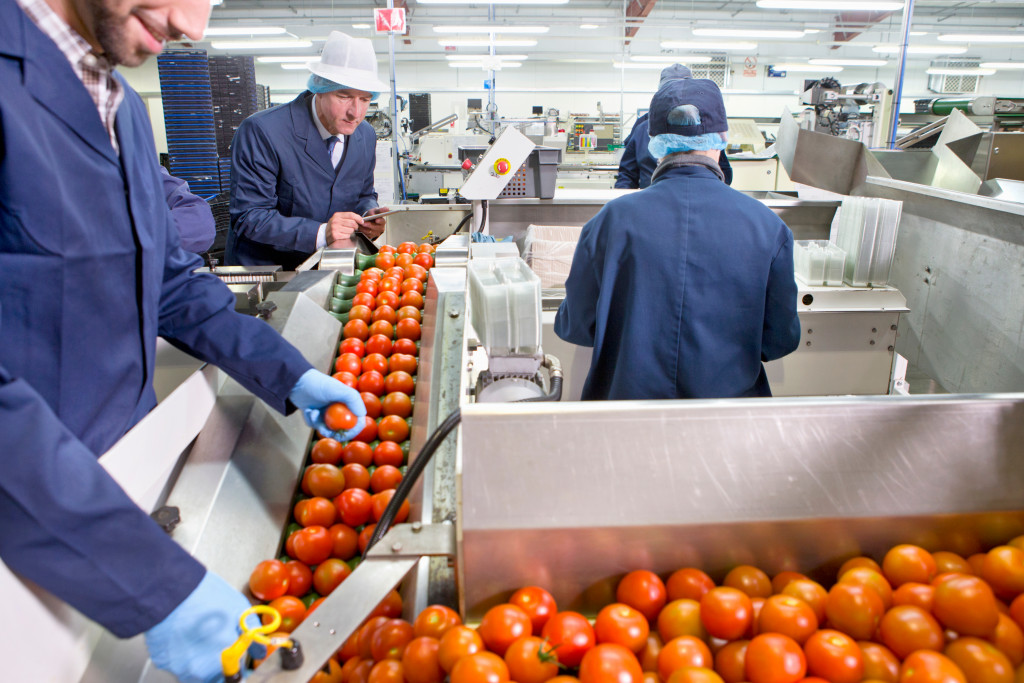- Sensor-based monitoring, including level switches, temperature sensors, and vision systems, improve safety and accuracy in food manufacturing.
- Automation solutions like inspection systems, inventory management, and packaging machines reduce labor and improve efficiency.
- Robotics enable assembly/disassembly of components, material handling, and picking/sorting with speed and accuracy.
- AI-based technology helps manufacturers analyze data, predict maintenance needs, and facilitate communication between humans and machines.
Food manufacturing plants have come a long way since the days of manual labor and inefficient production systems. Thanks to advancements in technology, food manufacturers can now produce more food with fewer resources, lower their costs, and improve the quality of their products. Here’s a look at some of the recent innovations that have revolutionized food manufacturing plants.
Sensor-based Monitoring
Manufacturing plants now leverage sensors to monitor food safety, analyze production processes, and track key performance indicators. Sensors are especially useful in detecting contamination or defects in products before they reach the consumer. Here are some common examples being used nowadays:
Level Switches
Utilizing efficient level switches enable manufacturers to accurately measure the level of liquid and solid products in containers. This helps them keep stock levels efficient, reduce waste, and avoid overproduction or underproduction of certain items.
Temperature Sensors
Temperature sensors help ensure food safety by monitoring temperatures inside production facilities and storage areas. This technology can prevent food spoilage and reduce the risk of foodborne illnesses.
Vision Systems
Advanced vision systems allow manufacturers to scan products for defects and unwanted items. This helps them ensure that their products meet high standards of quality before they are shipped out.

Automation Solutions
One of the most significant changes in food manufacturing is the rise of automation solutions. Automated systems allow for faster, more efficient production processes and reduce the need for manual labor. Here are some areas that can be automated:
Inspection Systems
Automated inspection systems make it easier for manufacturers to check for defects or contaminants in their products. This helps them improve product quality and reduce the risk of product recalls.
Inventory Management
Automated inventory management systems help manufacturers keep track of stock levels and order new materials as needed. This helps them avoid overstocking or running out of key items.
Packaging Machines
Manufacturers now use robotic arms and automated packaging machines for packaging products quickly and efficiently. This allows for faster production times and better packaging quality.
Robotics
Robotics has played an important role in improving efficiency in food manufacturing plants by eliminating tasks that used to be time-consuming and labor-intensive. Robots are able to move quickly between production lines in order to complete multiple tasks simultaneously. This helps reduce downtime and increase overall efficiency. Here are some things robots can do in a plant:
Assembly and Disassembly
Robots can be used to assemble and disassemble packaging materials, as well as perform delicate tasks like attaching labels. This eliminates the need for manual labor and reduces errors in the production process.
Material Handling
Robots can be programmed to move materials quickly between production lines, eliminating the need for human workers to do this task. They are now able to accurately move and stack boxes or pallets in preparation for shipment. This helps speed up the process of packing and shipping orders.
Picking and Sorting
Robots can pick individual products from a conveyor belt and sort them into separate lines. This helps reduce the number of human errors and speeds up the production process. In fact, some robots are even able to identify defects in specific products and take corrective action.

AI-Based Technology
Artificial intelligence (AI) is becoming increasingly important in modern food production processes. AI-based technology helps streamline many areas of the production process and can be used to help predict demand, optimize production processes, and reduce waste. Here are just some of its applications:
Data Analysis
AI can be used to analyze vast amounts of data from production processes and give manufacturers greater insights into how they are performing. This helps them make better decisions and develop new strategies for improving performance.
Predictive Maintenance
AI-based predictive maintenance systems can detect problems in equipment before they happen so that manufacturers can take preventive action. This helps reduce downtime and improve safety.
Communication Platforms
AI can be used to facilitate communication between humans and machines, allowing for more efficient collaboration. This helps manufacturers streamline their processes and respond quickly to changes in the market.
All of these advancements have revolutionized food manufacturing plants, making them smarter, safer, and more efficient than ever before. By leveraging technology, manufacturers are able to produce more food with fewer resources and improve the quality of their products. This has allowed them to reduce costs, increase profits, and provide a better experience for customers. In other words, technology is transforming the way food is manufactured, stored, and shipped – ultimately improving the lives of both producers and consumers alike.



















